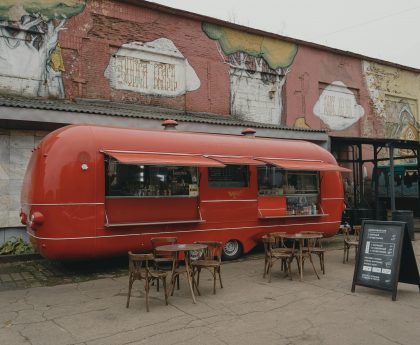The food truck industry, a vibrant and dynamic facet of urban life, has seen a remarkable evolution over the past decade. Gone are the days when finding a food truck meant catching a lucky break on a street corner. Today, technology bridges the gap between gourmet trucks and hungry customers through innovative food truck apps. This post explores how these apps, especially platforms like My Foodie Truck, are revolutionizing the way food trucks operate and serve their growing customer base.
The Digital Transformation of the Food Truck Industry
In the early 2000s, food trucks were largely a hit-or-miss affair. Patrons needed to rely on word of mouth or happenstance to locate their favorite mobile eateries. As social media platforms gained traction, food truck operators began leveraging these sites to broadcast their locations and menu updates. While effective to an extent, social media still didn’t offer the real-time precision or convenience that a mobile, hungry populace demanded.
Enter food truck apps. These specialized digital tools are designed to streamline the experience from both sides of the window—helping customers locate trucks in real time while assisting vendors in managing operations more efficiently. Apps like My Foodie Truck serve as a nexus between food lovers and mobile kitchens, incorporating features like GPS tracking, menu listings, and customer reviews, all accessible with a simple tap.
Key Features of Food Truck Apps
1. Real-Time Tracking:
One of the most impactful features of food truck apps is GPS-based real-time tracking. Customers can see exactly where their favorite trucks are parked, down to the minute. This eliminates the guesswork and frustration of outdated locations, ensuring that no one misses out on their favorite meals.
2. Dynamic Menus and Ordering:
Food truck apps allow operators to update their menus in real time. Daily specials, changes in availability, and pricing can all be adjusted on the fly, which is communicated immediately to the customer base through the app. Some apps even allow for pre-ordering, enabling customers to place orders directly from their phones and pick up their food with minimal wait time.
3. Customer Interaction and Feedback:
Interactive features such as rating systems, review boards, and social media integration enable a dynamic interaction between truck operators and customers. This feedback is invaluable for businesses looking to improve their services and menu offerings. Additionally, these interactions foster a community around the food truck scene, enhancing customer loyalty and engagement.
4. Marketing and Promotions:
Apps provide a direct marketing channel to customers, allowing food truck operators to send push notifications about new menu items, promotions, and discounts. This targeted approach can significantly increase sales, especially during off-peak times by enticing customers with timely deals.
Benefits of Food Truck Apps to Operators
For operators, the advantages of adopting a food truck app like My Foodie Truck are clear. Firstly, these apps reduce the uncertainty of daily operations. Predictive analytics can help forecast busy periods, optimize routes and locations, and manage inventory more effectively. This data-driven approach minimizes waste and maximizes profitability.
Moreover, being part of an app ecosystem increases a truck’s visibility exponentially compared to traditional methods or standalone social media efforts. It opens up opportunities to participate in app-organized food truck rallies, festivals, and other events, which might otherwise be outside an individual operator’s reach.
Customer Advantages
From a customer’s perspective, the benefits are equally compelling. The convenience of discovering, tracking, and even paying for food through an app is a significant upgrade over the traditional food truck hunting experience. Apps can also personalize recommendations based on previous orders, dietary preferences, and even suggest trucks based on location and taste profiles.
The Future of Food Truck Apps
As technology continues to evolve, so too will the features and capabilities of food truck apps. Future iterations may include integration with augmented reality for more immersive menus, smarter analytics for even more precise customer targeting, and enhanced mobile payment systems that support a contactless, cashless transaction environment.
Artificial intelligence could also play a role in optimizing food delivery routes, predicting customer trends, and managing supply chains. The potential for IoT devices to integrate with these apps, providing real-time data on everything from fuel levels to oven temperatures, could further revolutionize this niche industry.
The transition from street to screen has not only been inevitable but incredibly beneficial for the food truck industry. Apps like My Foodie Truck are at the forefront of this revolution, offering tools and features that benefit both food truck operators and their customers. By embracing these digital solutions, the food truck industry is set to continue its growth trajectory, driven by efficiency, connectivity, and enhanced customer experiences. As we look to the future, the synergy between street fare and digital flair shows no signs of slowing down, promising a new era of dining that is as exciting as it is delicious.




